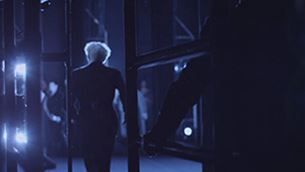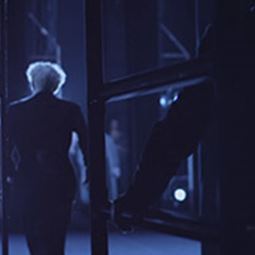About the Archives
The BAM Hamm Archives tell the 150-year history of BAM, but they also tell a story of the people and communities—civic and artistic—that made BAM what it is today. The Archives and its staff provide a rich and unique resource for those interested in BAM artists, the history of performing arts in the U.S., and in Brooklyn's social history.
The need for a formal BAM Archives was identified in 1995 when a search for records, photographs and other documents revealed that items of historical value had become scattered in various BAM buildings and throughout New York City. BAM had lost portions of its historical materials in the 1903 fire that destroyed BAM's original building in Brooklyn Heights, and more to a flood in 1977.
The collection that remained was combined with materials about current BAM programming starting in 2005, and that collection has continued to grow. It includes documents and photographs dating from 1857 to the present, such as playbills, posters, architectural plans, administrative files, production records, press clippings, and video. These items require approximately 3000 linear feet of shelf space and are now housed in the BAM Hamm Archives Center in a modernized facility at 1000 Dean Street in Crown Heights.
Additionally, the archivists are now completing a data cataloging system that will enable researchers to browse and search online a portion of the Archives – the Leon Levy Digital Collection. To date, over 25,000 images and documents have been entered in the digital collection. It can currently be accessed by staff and visitors in the physical Archives, and will be ready for on-line use by the public in 2016.
The Archives would not exist without the support of many individuals and corporations. Major support is provided by Charles J. and Irene F. Hamm and the Leon Levy Foundation.
BAM’s history is here for you to explore. Let us know how we can help!
INITIAL INQUIRIES
We ask that researchers clearly define the scope of interest so the archivist can assist in locating all relevant materials (to help you maximize your visit).
When visiting BAM Hamm Archives
— leave personal belongings in a secure location as directed by the archivist prior to using materials (to ensure security for the materials)
— only use pencil when taking notes (to avoid damaging the materials)
— only use one item from a folder or box at a time (to ensure materials are returned to files in the correct order)
— follow the direction of the Archives staff (to ensure security and safety for you, the staff, and the materials)
ON COPYRIGHTS
If a researcher plans to publish materials from the BAM Hamm Archives (excerpts, copies of photographs, etc.), that researcher is obligated to identify and resolve any copyright restrictions on materials prior to publication. The archivist will gladly help with whatever may already be known concerning restrictions on the materials, but the researcher is solely responsible for determining whether there are copyright restrictions on material and, if so, for obtaining permission to use the material for publication. This is a complex area, and while we can sometimes provide information about the rights ownership of a particular work, many times we may not know. Be aware that many photographs in the collection are under copyright, even when created by photographers hired by BAM. Further, there may be contracts with artists that address the usage of that artist's photographs. The researcher must obtain from the lawful holder of copyright any necessary permission to publish.
For more background on copyright, there are numerous resources to consult, including: United States Library of Congress, Cornell University, Copyright and Cultural Institutions: Guidelines for U.S. Libraries, Archives, and Museums, and Copyright Watch.
In the event that the materials from the Archives are used in a publication, we request a courtesy copy of the publication for the Archives.
Listed below are the broad categories of materials that are available for use by visitors to the Archives.
Programs: Performance programs and BAMbills from 1861 to present.
Programming binders: This collection comes from the office of BAM Executive Producer Joseph V. Melillo and comprises a binder for each mainstage production between 1994 and 2012, including contracts, artist correspondence, press releases, and programs.
Scrapbooks: A small collection of popular music and theater offerings in Brooklyn, 1899 to 1908.
Photography slides and prints: Promotional and production photographs of artists from 1970 to 2005.
Posters: Large flat files containing printed posters and artwork from BAM productions. Some posters are signed by the artist or are unique in the Archives.
Performance documentation videos: This collection documents BAM’s performances from 1983 to the present. Copies of these videos are also retained at NYPL's Performing Arts Division and can be viewed there by appointment.
Ephemera: A collection of BAM-related memorabilia, from an 1870s pewter cup commemorating a banquet to various products produced by BAM marketing, such as t-shirts, buttons, and pairs of BAM 150 socks.
Bulletins of the Brooklyn Institute of Arts and Sciences (BIAS): Richly illustrated bound bulletins from 1909 through the 1950s detailing and advertising BAM performances. BIAS, for many of these years, was the parent organization of the Brooklyn Museum, Brooklyn Children’s Museum, Brooklyn Botanic Garden, Biological Laboratory at Cold Spring Harbor, and Brooklyn Academy of Music.
Presidents’ Files: The collection contains many institutional records, including the files of the organization’s leaders. The first such records processed are from Harvey Lichtenstein, BAM’s president from 1967 to 1999.


